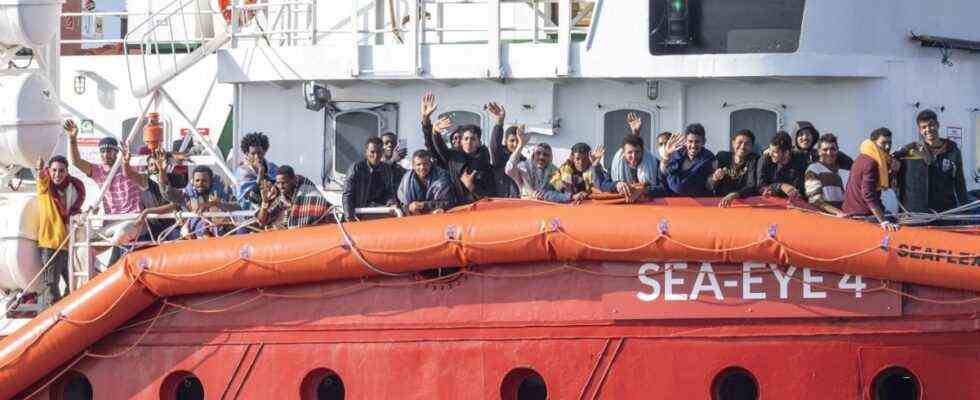Full lifeboats are arriving in Italy again, there are bigger ones than we have seen since 2017. Despite bad weather, despite high waves in the central Mediterranean. “Maxi sbarco”, write the Italian newspapers, Maxi arrival. On board the Sea-Eye 4 The authorities counted 847 refugees from the aid organization of the same name from Regensburg, for example, which was allowed to dock on Sunday after a long wait for a port to be allocated in Trapani, Sicily. 54 of them were women and 170 minors, 130 of whom were traveling without parents. Caritas gave the little ones colorful plastic balls to play with at the harbor pier. Some adults joined in the same choir over and over again: “Italia, Italia!”
Many relieved, tired faces could be seen. The authorities took the personal data, tested for Covid-19. Then the people were put on two quarantine ships.
As happy as the pictures and choirs looked: For the NGOs, the case proves the Sea-Eye 4 once again that Europe is failing to deal with migration across the Mediterranean. Malta, according to the crew, did not even respond to their calls for help. The 847 migrants were brought on board during several emergency operations between Libya and Malta, and in some cases help came at the last minute. But Italy also took a lot of time again before it issued a landing permit. Rome feels left alone by its European partners.
Matteo Salvini uses every opportunity to attack the interior minister
“Of course it is right that we save lives,” said Italian Interior Minister Luciana Lamorgese. “But it is not correct that only we save lives.” The Italians are disappointed that the negotiations on a new asylum and migration pact in the European Union have stalled for months and that the exposed countries in the south are receiving no solidarity from the north and east – at least not structural. The distribution mode of the “Pact of Malta” is still being used; however, this is based on the voluntary nature of a few countries and is interpreted individually on a case-by-case basis.
Lamorgese is also under domestic political pressure because the number of translating migrants has risen again this year: From January 1 to November 5, the Italians counted almost 55,000 new arrivals; In 2020 there were a total of 27,000, in 2019 only 10,000. Compared with the years 2014 to 2017, when well over 100,000 migrants arrived in Italy, that is still a manageable number. But Matteo Salvini from the right-wing Lega, formerly Minister of the Interior himself, never missed an opportunity to attack his successor in office. This time Salvini said: “A German ship is unloading more than 800 illegal immigrants in Sicily – a question: Did our interior ministers and foreign ministers ask Berlin and Brussels to take on the burden of these immigrants, or is that okay with them?” The attacks are also memorable because the Lega is involved in the government.
Lately, the number of crossings on an old route that has been barely frequented for a long time has increased: from Turkey to Calabria. The new Italian weekly newspaper L’Essenziale reports in a report that Ukrainian seamen also use tugs to bring refugees across the sea to the Ionian coasts on sailboats and yachts. Most of the cases are Iraqis, Iranians, Egyptians, Syrians and, more recently, Afghans in particular. According to the Ministry of the Interior, 15 percent of all migrants who set foot in the EU for the first time in Italy come via this route. Almost all of the others still come via the central Mediterranean, including the 308 on the Ocean Viking. The SOS Méditerranée ship is in front of Lampedusa – and is waiting there for a port to be assigned.

